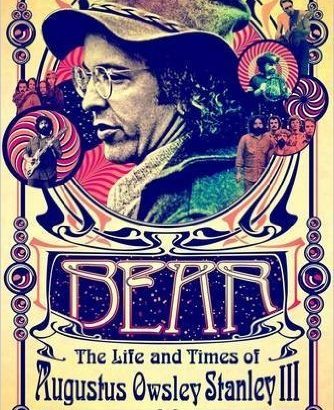Por: Ron Jacobs
Ken Kesey, the late author and psychedelic ranger, once told a High Times interviewer that “Acid ended the Vietnam War….Acid was a blessed thing, a powerful thing.” While he obviously didn’t mean the first part of his statement to be taken literally (after all, it was the defeat of the US and their client forces in southern Vietnam by the national liberation forces that ended that debacle), what he did mean was that the mass consumption of LSD in the 1960s and early 1970s by young people in and out of the military changed their consciousness to the extent that the war and its purpose became ever more meaningless in their minds. Soldiers and civilians alike just saw the whole exercise for what it was—a bloody festival of death celebrated for the benefit of profit and power.
Of course, LSD (or acid) had its casualties, too. It is not my intention to dismiss them or the harm the drug caused. Overall, however, I am of the opinion that the consciousness-expanding effects of LSD were beneficial to the world at large. Originally only available via Sandoz Laboratories and for what were termed professional reason, it wasn’t until the mid-1960s that acid began being manufactured by chemists not connected to the world of professional research. Of those black market chemists, it was a maverick individual named Augustus Owsley Stanley III who was both the first and the most famous.
In fact, there was a shining moment, at least in the expanded minds of some, when that chemist named Owsley was like a demigod; a combination of Dionysius, Hermes and Owsley himself. His wares were legendary and their magic was beyond description. Motivated by a desire to make the people in the world he communed with more aware of that which is inside the human experience and as yet undiscovered, he made and distributed at least a million hits of the elixir called lysergic acid diethylamide-25. When his first batches were made and distributed, LSD was still legal. However, on October 6, 1966, it became illegal and was classified as a Schedule One substance. Despite the change in laws, Owsley continued to manufacture and distribute his product. For obvious reasons having to do with the law, he tried to keep his name out of the limelight, but some of his champions would have none of that. Eventually, as Robert Greenfield tells it in his new biography of Owsley, titled Bear: The Life and Times of Augustus Owsley Stanley III, Owsley was being touted as the king of LSD in one of the most popular magazines of the period, Life. As noted previously, the notoriety was not something he wanted.
According to the legend, and confirmed by Greenfield’s biography, Owsley was an eccentric and unique individual. He was also extremely intelligent, creative and forceful. In regards to that intelligence, Greenfield begins his book with guitarist Jerry Garcia’s comment on Owsley: “There’s nothing wrong with Bear that a few million less brain cells wouldn’t cure.” For those who don’t know, Garcia and Owsley’s friendship went back to the early days of the Sixties counterculture and the events organized (and I use the term in a rather loose way) by author and LSD advocate Ken Kesey and his crew of artists and clowns, the Merry Pranksters. The band Garcia played in—the Grateful Dead—were the musical entertainment for these gatherings and Owsley became their sound engineer and advocate. His dedication to perfection was present not only in his manufacture of LSD, but also in his drive to create the perfect sound system for the band.
Greenfield captures a bit of all of this and more. Like any biography of someone who was adamant about not leaving a paper trail and generally just a fairly private person (which certainly describes Owsley), Greenfield’s text is a valiant effort to create a coherent and relatively linear story about a human who was certainly coherent but did not necessarily live the most linear of lives. In part, this biography is just another version of the story so often told about the Sixties counterculture in the San Francisco Bay Area. What makes it different from those other tales, though, is that the story is told this time through the eyes of a man who wasn’t a musician, or an activist, or even necessarily a hippie. Yet, it was the product of what I would call his alchemy that inspired the directions those artists, activists and hippies all took. LSD was crucial to the cultural upheaval that the decade known as the Sixties is identified with. The LSD made by the man we called Bear was some of the best. His influence is immeasurable. Robert Greenfield does a damn good job of telling us why that is so.








 Users Today : 81
Users Today : 81 Total Users : 35460098
Total Users : 35460098 Views Today : 101
Views Today : 101 Total views : 3418732
Total views : 3418732